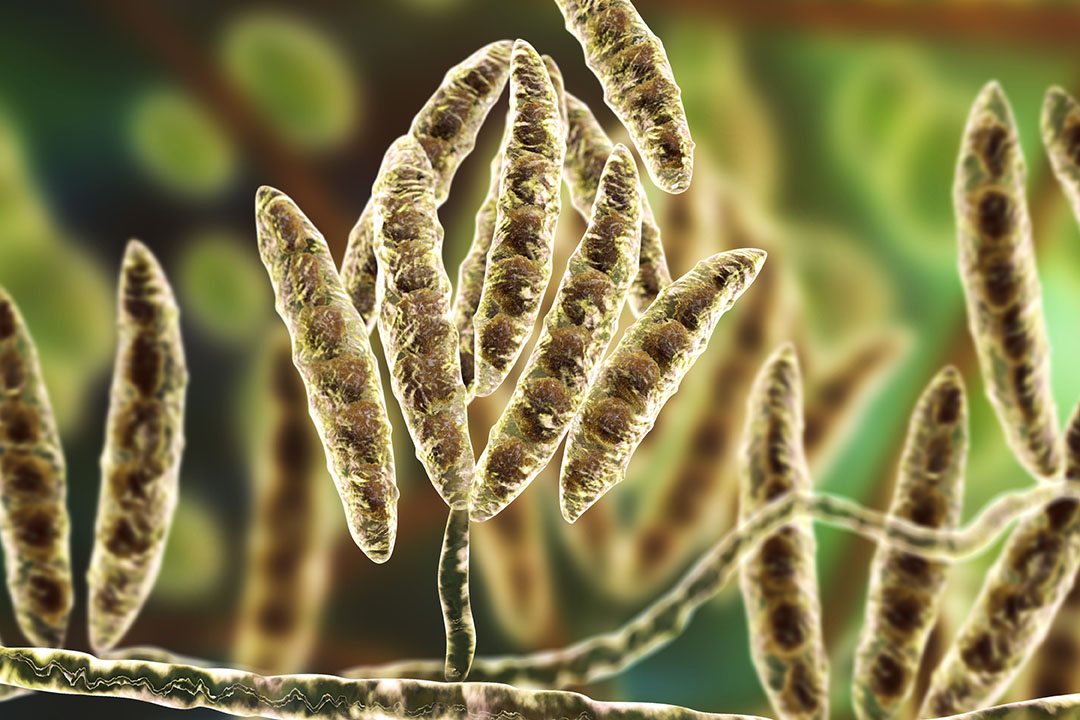Introducing SFR research on mycotoxins

Animal feed contamination with mycotoxins remains an important issue. Every new survey performed worldwide finds more mycotoxins in the analyses, including those commonly neglected, also called emerging mycotoxins.
The list of mycotoxins increases not only as a result of advanced detection methods, but contamination patterns are also affected by climate change. For example, temperature and water activity in the plant are the main ecological factors determining mycotoxin production.
![]() Mycotoxin Knowledge Centre:
Mycotoxin Knowledge Centre:
This interactive tool provides information on the impact on livestock health, an A-Z, plus regulations.
Due to a lack of toxicological data, only a few mycotoxins are regulated. Usually recommendation levels per animals species are given for aflatoxin, zearalenone, deoxynivalenol, ochratoxin and fumonisins. However, most raw materials and animal feeds are contaminated with a mixture of these and other mycotoxins. Although most mycotoxins are found under the safe recommended levels, feedstuffs are usually contaminated with a mixture of different mycotoxins. The risk that an animal is exposed to a mixture of mycotoxins is very low and this also depends on its health status. However, it is known that multiple contamination may impair the performance of highly productive animals. Many studies in the past have indicated that there is often an additive or synergistic effect of combined mycotoxins.
 Managing mycotoxins
Managing mycotoxins
Mitigating mycotoxins is a huge global challenge with no universal solution. Developments need to happen from all sides of the supply chain; a safe harvest, safe storage and animals prepared to safely deal with mycotoxin exposure. Here, the latest breakthroughs across these areas are explored.
However, results obtained from a combination of 2 or 3 mycotoxins at non-realistic levels (extremely high and unlikley to be found in the final diet) cannot be translated into practice.
At Schothorst Feed Research (SFR) we focus our efforts on 2 main research lines related to mycotoxins:
- in vitro studies dedicated to understanding the mechanism of action of neglected mycotoxins or the interaction of the main mycotoxins with host microbiota, and
- in vivo studies to understand the effects of naturally contaminated diets on the gut health, behaviour and performance of farm animals (swine, poultry and cattle) kept under optimal health conditions and applying mycotoxins at recommended levels, e.g. according to EU guidelines.
To give an example of our findings, we showed recently in an in vitro study that the negative effect of zearalenone (ZEA) on female gametes can be counteracted by a microbiota product (equol) that can be produced by micro-organisms hosted by animals fed soybean-based diets. The next step of this study is to evaluate if such an event is also observed in vivo. SFR is a research centre dedicated to animal nutrition. Therefore, we investigate not only mycotoxin levels/interactions in diets and the methods of decontamination, but also the influence of diet composition in terms of nutrients, other additives, and feeding period. We will be pleased to share some of our interesting results in future columns of All About Feed.











